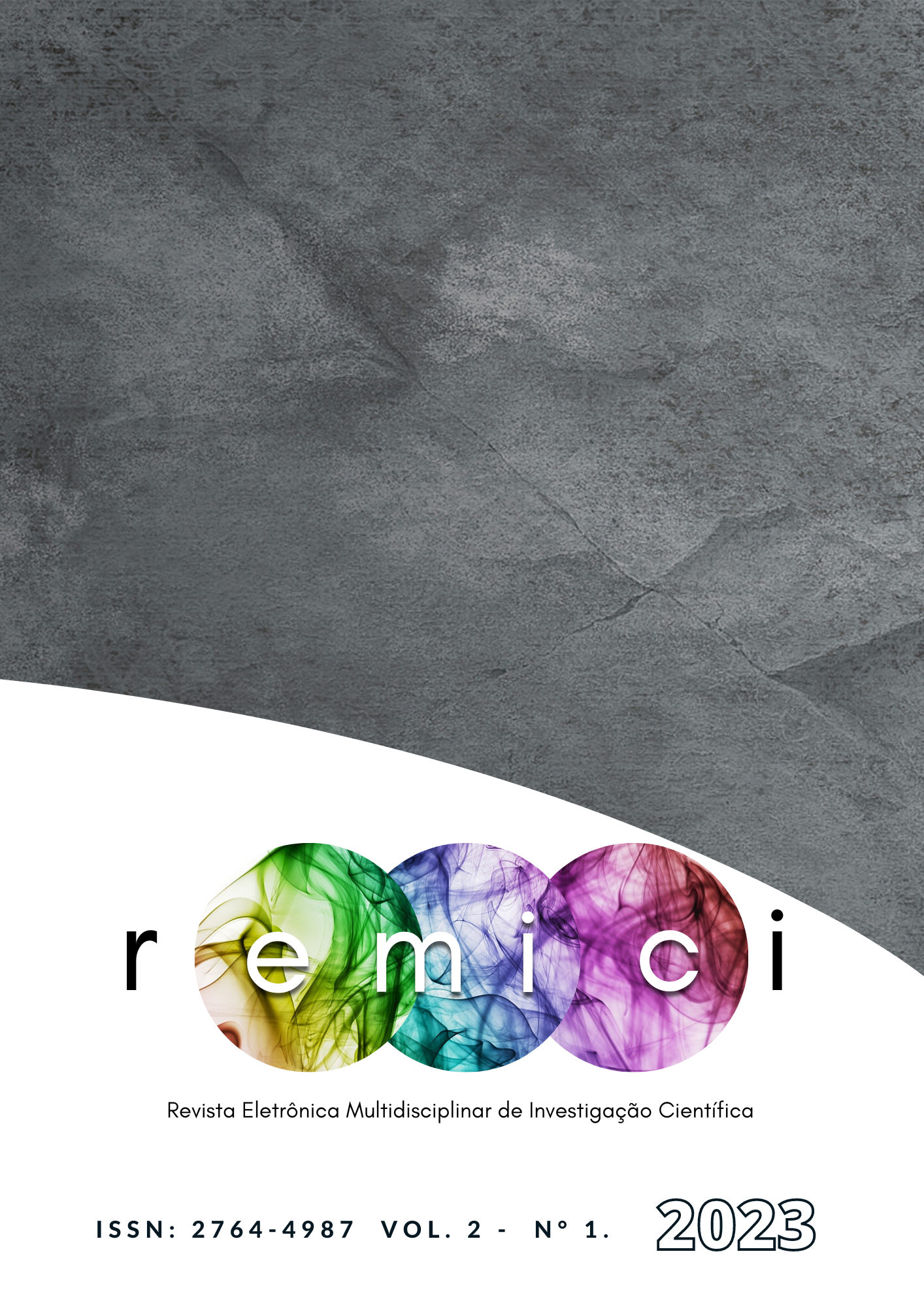EVOLUÇÃO E DISTRIBUIÇÃO DO PRONAF ENTRE 2017 E 2022: UM ESTUDO MULTIRREGIONAL DAS LINHAS CUSTEIO E INVESTIMENTO
Main Article Content
Abstract
The National Program for the Strengthening of Family Agriculture (PRONAF) is a relevant public policy when analyzing its distribution of credit to family farmers in the country. This work aims to highlight the operations of the program's costing and investment lines, as well as verify and analyze its evolution and financial distribution in Brazil and more specifically in the Northeast and South regions of Brazil between the years 2017 and 2022. In this sense, quantitative data on the amount of credit financed by the program were used. program, made available by the Central Bank of Brazil and IBGE, so that the values were not deflated and are at their nominal value. The results of this work indicate that, between 2017 and 2022, PRONAF resources suffered a continuous increase, while the numbers of contracts carried out had decreases. In the regions, it is possible to verify the concentration of financed resources and the operationalization of the program, as well as the inequality in the distribution of credit between the South and Northeast regions of the country. The research results in a large concentration of funding in the South region, while the Northeast region cannot reach, in 2022, 30% of the resources distributed to family farmers in the South.
Article Details

This work is licensed under a Creative Commons Attribution-NonCommercial-ShareAlike 4.0 International License.
References
AQUINO, J. R.; SCHNEIDER, S. O Pronaf e o desenvolvimento rural brasileiro: avanços, contradições e desafios para o futuro. In: SCHNEIDER, S. (org.) Políticas públicas de desenvolvimento rural no Brasil. Porto Alegre, RS: Editora da UFRGS, 2015. p. 53-81, 2015. Disponível em:<https://www.lume.ufrgs.br/bitstream/handle/10183/232461/001014493.pdf?sequence=1>. Acessado em: Novembro, 2022.
AQUINO, J. R.; ALVES, M. A.; VIDAL, M. F. Agricultura familiar no Nordeste: um breve panorama dos seus ativos produtivos e da sua importância regional. Boletim regional, urbano e ambiental. 2020. Disponível em: <https://repositorio.ipea.gov.br/bitstream/11058/10481/1/brua_23_artigo7.pdf>. Acessado em: Novembro, 2022.
BANCO CENTRAL DO BRASIL. Brasília; Bacen, 2022. Disponível em: https://www.bcb.gov.br/estabilidadefinanceira/reportmicrrural?path=conteudo%2FMDCR%2FReports%2FqvcRegiaoUFGenero.rdl. Acessado em: Novembro, 2022.
BUSTAMANTE, P. M.; BARBOSA, F. F. A participação da agricultura familiar no âmbito do agronegócio brasileiro. Revista CEPE, Santa Cruz do Sul, n. 52, p. 67-96, jul./dez. 2020. Disponível em: <https://online.unisc.br/seer/index.php/cepe/article/view/16160>. Acessado em: Novembro, 2022.
CORCIOLI, G.; CAMARGO, R. Programa nacional de fortalecimento da agricultura familiar (PRONAF). Agricultura Familiar em Goiás, p. 253, 2018. Disponível em: <https://files.cercomp.ufg.br/weby/up/688/o/ebook_agricultura_familiar.pdf#page=253>. Acessado em: Novembro, 2022.
FERREIRA-PAIVA, L. et al. A k-means-based-approach to analyze the emissions of GHG in the municipalities of MATOPIBA region, Brazil. IEEE Latin America Transactions, v. 20, n. 11, p. 2339-2345. 2022. Disponível em: <https://latamt.ieeer9.org/index.php/transactions/article/view/6738/1684> Acessado em: Dezembro, 2022.
IBGE – Instituto Brasileiro de Geografia e Estatísticas. Censo Agropecuário 2017. Disponível em: https://censoagro2017.ibge.gov.br/templates/censo_agro/resultadosagro/pdf/agricultura_familiar.pd. Acessado em: Novembro, 2022.
IBGE/SIDRA – Instituto Brasileira do Geografia e Estatística/Banco de Tabelas Estatística. Censo Agropecuário 2017. Disponível em: <https://sidra.ibge.gov.br/pesquisa/censo-agropecuario/censo-agropecuario-2017#caracteristicas-estabelecimentos>. Acessado em: Novembro, 2022.
JUNIOR, V. J. W. O Pronaf pós-2014: intensificando a sua seletividade? Revista grifos, v. 30, n. 51, p. 89-113, 2021. Disponível em: < https://pegasus.unochapeco.edu.br/revistas/index.php/grifos/article/view/5353>. Acessado em: Novembro, 2022.
MAPA - MINISTÉRIO DA AGRICULTURA, PECUÁRIA E ABASTECIMENTO. Plano Safra 2020/2021: O florescer de uma nova colheita. Brasília, DF. 2020. Disponível em: https://www.gov.br/agricultura/pt-br/assuntos/politica-agricola/todas-publicacoes-de-politica-agricola/plano-agricola-pecuario/plano-agricola-e-pecuario-2020-2021>. Acessado em: Janeiro, 2023.
MELO, L. A. Crédito Rural no Brasil: Uma Realidade para a Mulher Agricultora Familiar? AgronEgócios, p. 61. 2006. Disponível em: < https://repositorio.iica.int/bitstream/handle/11324/19428/CDBR22018343p.pdf?sequence=1#page=61>. Acessado em: Janeiro, 2023.
PAULA, L. F.; PIRES, M. Crise e perspectivas para a economia brasileira. Revista: Estudos Avançados, Rio de Janeiro, v. 31, n. 89, p. 125-144, 2017. Disponível em: < https://www.scielo.br/j/ea/a/jNpn6wfChvNj659nr4LLtGD/?format=html>. Acessado em: Janeiro, 2023.
SUELA, A. G. L. et al. Conhecimento, percepção climática e comportamento pró-ambiental na agricultura. Revista Econômica do Nordeste, v. 51, n. 3, p. 193-206, 2020a. Disponível em: < https://g20mais20.bnb.gov.br/revista/index.php/ren/article/view/1126>. Acessado em: Janeiro, 2023.
SUELA, A.; NAZARETH, M. S.; CUNHA, D. A. da. Efeitos Ambientais da Implementação do Plano ABC no MATOPIBA: Uma Abordagem por Insumo-Produto. Revista Brasileira de Estudos Regionais e Urbanos, [S. l.], v. 14, n. 4, p. 629–656. DOI: 10.54766/rberu.v14i4.654. 2020b. Disponível em: <https://g20mais20.bnb.gov.br/revista/index.php/ren/article/view/1126>. Acessado em: Janeiro, 2023.
SUELA, A. G. L. et al. Análise de impacto econômico e relações setoriais entre matopiba e o restante do brasil: uma abordagem por insumo-produto/Economic Impact Analysis and Sectorial Relations between MATOPIBA and the Rest of Brazil: An Input-Output Approach. Informe GEPEC, v. 26, n. 1, p. 62-86, 2021. Disponível em: <https://saber.unioeste.br/index.php/gepec/article/view/27994/20237 >. Acessado em: Janeiro, 2023.

